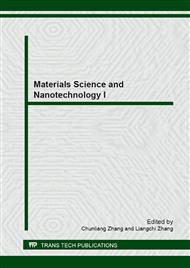p.114
p.118
p.122
p.127
p.131
p.135
p.141
p.145
p.149
Balance Melting Point and Compatibility of Polypropylene/Syndiotactic1,2-polybutadiene Blends by Using DSC
Abstract:
The balance melting point and compatibility of Polypropylene/Syndiotactic1,2 polybutadiene (PP/s-PB) blends and neat PP were studied by using DSC, the results showed that the presence of s-PB in PP would have a strong impact on balance melting point of PP. The presence of s-PB in PP could effectively decrease balance melting point of PP. Balanced melting point depression proves that there are strong interactions between two macromolecular chains in compatible part of blend. According to Nishi-Wang theory, PP and s-PB are incompatible in thermodynamics, but compatible in dynamics. Namely, PP/s-PB are partial compatible. The structure is heterogeneous in microscopy, but homogeneous in macroscopic, this also proves that there are strong interactions between two macromolecular chains in blend. The strong interactions is a kind of useful toughness effect on PP.
Info:
Periodical:
Pages:
131-134
Citation:
Online since:
December 2012
Authors:
Price:
Сopyright:
© 2013 Trans Tech Publications Ltd. All Rights Reserved
Share:
Citation:


